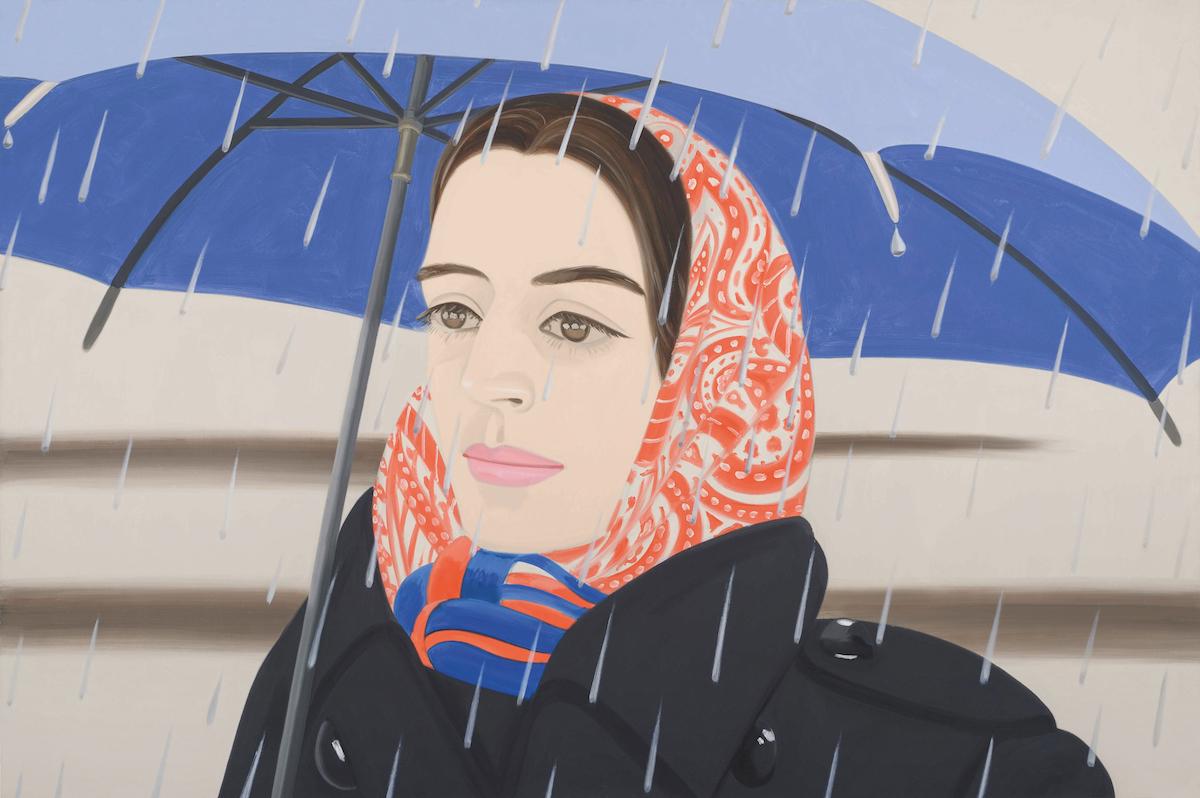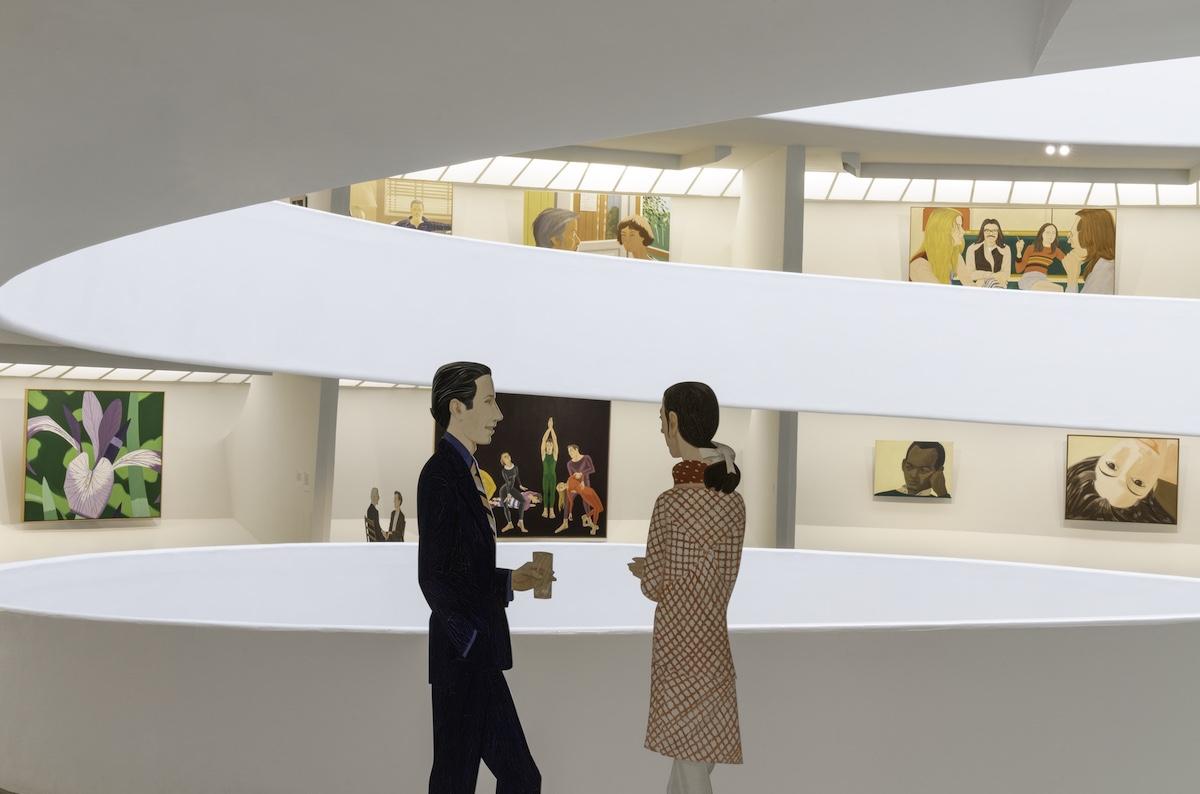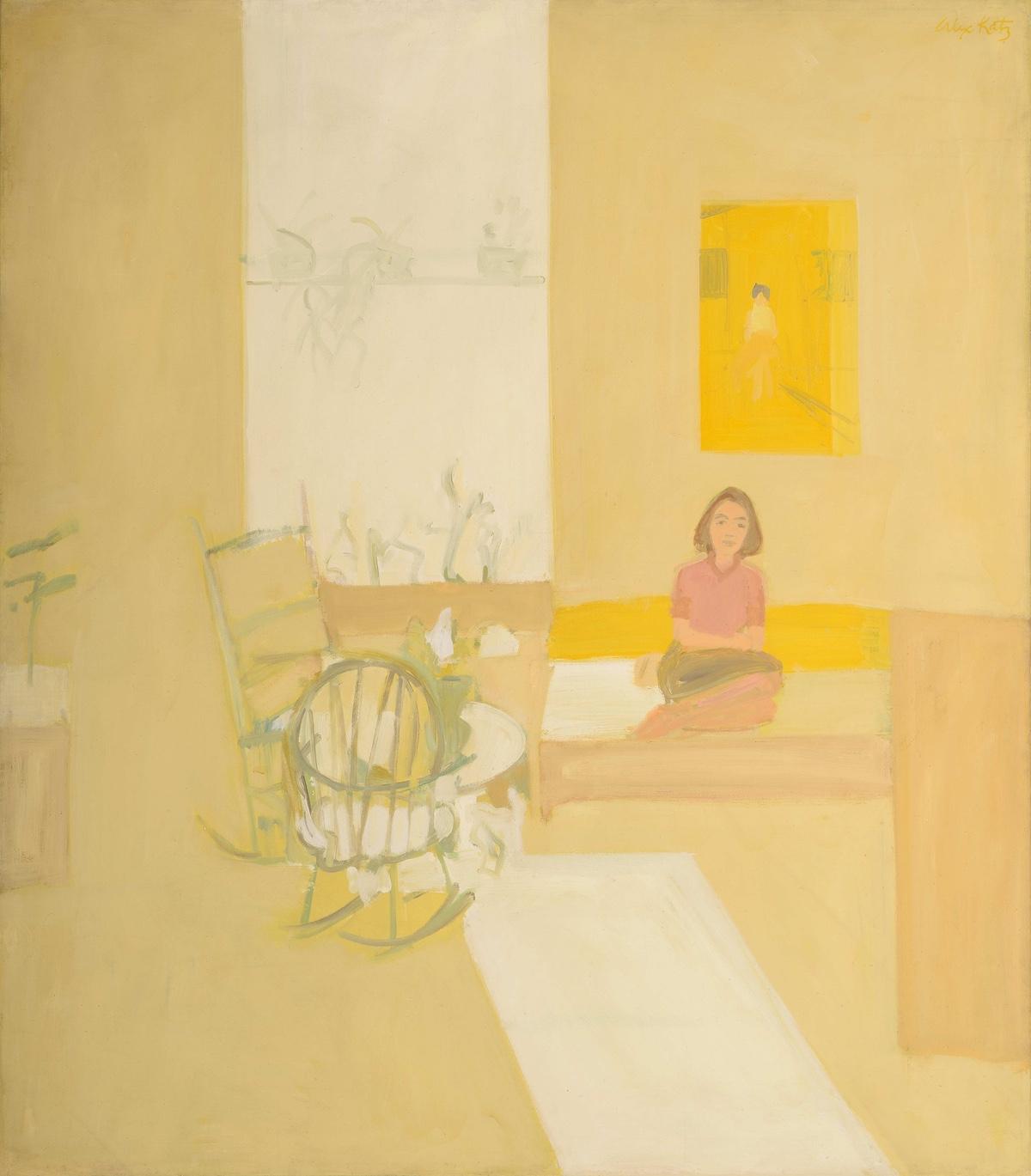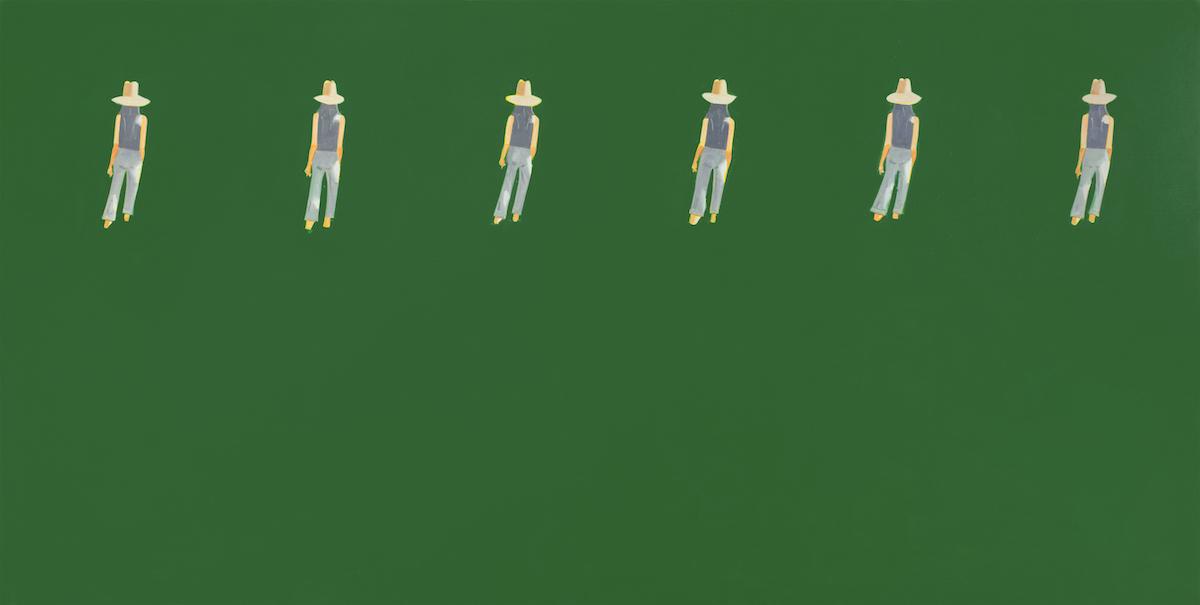Relegating his subject matter to landscapes, still lifes, and interiors, as well as to portraiture, Katz is basically a genre painter, a tradition that found its fullest expression in 17th-century Holland. Indeed, his oversize likenesses are part of a continuum going back to the “tronie” (translatable to face) of Golden-Age Dutch art. Tronies weren’t formal portraits of known persons, but rather studies of the outward expressions—sometimes exaggerated—of anonymous individuals. Katz’s work differs, of course, not only because of their scale, or because his sitters are usually friends or family members, but also because the emotional range of his subjects is limited.
Although lips—pursed or slightly open in tight smiles—play a part in registering feeling, Katz relies mainly on the eyes, those windows onto which the soul opens here through slight shifts in position, or glints of light. In Blue Umbrella 2 (1972), for instance, Katz’s favorite model and muse—his wife Ada—wears a gaily-colored kerchief as she shelters herself from the pelting rain under a cerulean parapluie. Three dots of white forming a line across each of her irises are all it takes to conjure the impression that Ada is also taking refuge in a daydream.
































